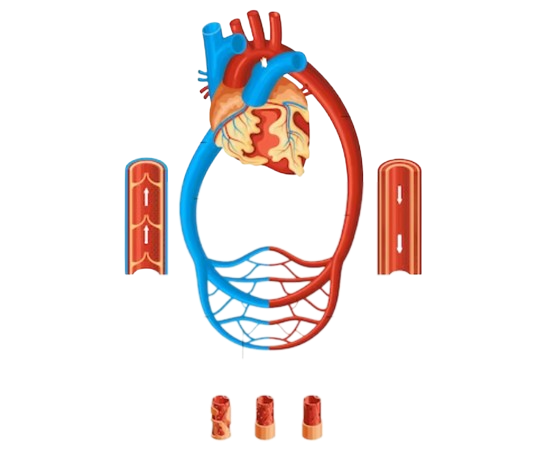Aortic Stenosis Treatment
Aortic stenosis stands out as a prevalent and severe issue among valve diseases. This condition involves the narrowing of the aortic valve’s opening, which subsequently restricts the flow of blood from the left ventricle to the aorta.
Additionally, aortic stenosis can impact the pressure within the left atrium. For individuals with a bicuspid aortic valve, a congenital heart defect, this condition often progresses as they age, primarily due to the accumulation of calcium deposits or scarring that damages the valve and reduces the volume of blood passing through it.

Symptoms
Aortic Stenosis Treatment can manifest with a variety of symptoms, which may include:
Chest Pain (Angina): Some individuals with aortic stenosis experience chest pain or discomfort, often during physical activity or exertion. This occurs because the narrowed valve restricts blood flow to the coronary arteries that supply the heart muscle.
Shortness of Breath (Dyspnea): As the condition progresses, patients may become increasingly short of breath, especially during exercise or when lying flat. This symptom can also manifest as orthopnea, where individuals find it easier to breathe when sitting up or propped with pillows.
Fatigue: Aortic stenosis can lead to reduced blood flow to the body, causing fatigue and a general lack of energy, even with minimal physical activity.
Palpitations: Some people with aortic stenosis may experience an irregular heartbeat or palpitations, which can be a result of the heart working harder to overcome the valve obstruction.
Fainting (Syncope): In severe cases, aortic stenosis can cause episodes of fainting or near-fainting (syncope), typically associated with exertion or sudden changes in position. This occurs due to reduced blood flow to the brain.
Heart Murmur: A heart murmur, which is an abnormal sound heard during a physical examination, is often present in individuals with aortic stenosis. However, not all heart murmurs indicate aortic stenosis, and further evaluation is needed.
Chest Discomfort or Pressure: Some patients may describe a feeling of pressure or tightness in the chest.
Decreased Exercise Tolerance: Aortic stenosis can limit a person’s ability to engage in physical activities and exercise, leading to a decrease in exercise tolerance.
When to access Medical Care
Many individuals with aortic stenosis (AS) may not experience any noticeable symptoms until there is a significant reduction in blood flow through the narrowed valve.
Aortic stenosis predominantly affects older individuals due to the accumulation of scarring and calcium deposits in the valve leaflets. Age-related AS typically begins to develop after the age of 60, but symptoms often do not manifest until around age 65 or 75.
Diagnosis
Aortic Stenosis Treatment can be influenced by various risk factors. Common risk factors for Aortic Stenosis Treatment include:
High Blood Pressure (Hypertension): Chronic high blood pressure can place increased stress on the aortic valve and may contribute to its narrowing over time.
Smoking: Smoking is a known risk factor for aortic stenosis. It can accelerate the calcification of the aortic valve.
High Cholesterol Levels: Elevated levels of LDL (low-density lipoprotein) cholesterol, often referred to as “bad” cholesterol, can contribute to the development of aortic stenosis.
Diabetes: Individuals with diabetes may have an increased risk of developing aortic stenosis, possibly due to factors related to glucose metabolism and inflammation.
- Other Heart Conditions: Individuals with other heart conditions, such as coronary artery disease or a history of heart attacks, may have an increased risk of developing aortic stenosis
- Radiation Therapy: Prior radiation therapy to the chest area, especially during childhood, may increase the risk of developing aortic stenosis later in life.
Rheumatic Fever: A history of rheumatic fever, which is caused by untreated streptococcal infections, can damage the aortic valve and lead to aortic stenosis.
Chronic Kidney Disease: Advanced kidney disease can increase the risk of aortic valve calcification and stenosis.
Recovery process
Recovery duration varies, contingent on factors like patient characteristics, chosen procedure, and the extent of severity.
Why entrust your care to us?
At Steps 2 Cure, our foundation of trust is built upon several key pillars that ensure your confidence in our services and expertise. Our team comprises highly qualified professionals with extensive experience in their respective fields. Their knowledge and skills enable us to offer you the best possible care and solutions for your medical needs. We understand that each individual is unique, and so are their healthcare requirements.
That’s why we prioritize tailoring our treatments and approaches to your specific circumstances, ensuring that you receive care that is truly designed for you. You are at the heart of everything we do. Your comfort, concerns, and aspirations guide our efforts. Our compassionate approach ensures that you feel valued and supported throughout your healthcare experience.
To commence the treatment procedure, you can start by forwarding your questions via WhatsApp at (+91 9999652964) or by sending an email to care@steps2cure.com. Our team will ensure a swift response to your queries.
Still have a Query?
Your health and peace of mind matter to us, and we’re dedicated to addressing any inquiries you may have with care and expertise. Feel free to reach out.
Subsribe To Our Newsletter
Stay in touch with us to get latest news and special offers.

